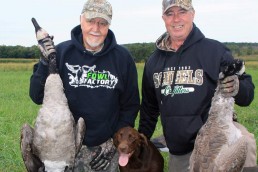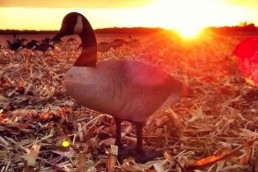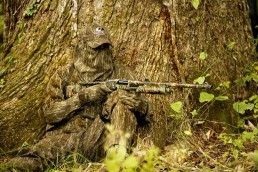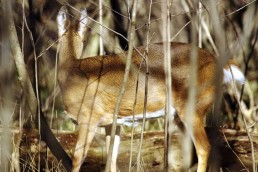Adjust and Stay Hidden: Goose Lessons Learned
SHARE THIS POST
As I began the process of preparing for another Canada goose hunting season, I couldn’t help but reflect on some of the hunts I participated in last year. Although it was a below-average season for our crew, we did have some days when things went right and the birds flew our way. For most of the experienced hunters I know, reliving the past season is an important aspect of preparing for the future. A person needs to take some time to dwell on what went right and what went wrong. The next step comes in correcting the errors whenever possible.
The biggest issue I continue to battle is concealment. It is simply impossible to overemphasize the importance of quality concealment. This fact is especially true later in the season when the birds have seen it all.
I continue to utilize Killer Weed and raffia grass on my layout blinds. I even have different grass colors available so I can easily add or delete colors. All of my grass is zip-tied to clips, so putting on one color and taking off another is not difficult. Adding a little natural vegetation is always recommended too.
Even with excellent concealment, it is nearly impossible to hide the geometric shape of a layout blind. Savvy geese definitely recognize this and learn to avoid unnatural shapes in the field.
I find that most of the geese we shoot come in low on the deck and do not get a chance for a great view of the spread from up high. Geese that come in high and over the top of the spread rarely come back for a second look. If geese are in range as they pass overhead, you had better call the shot because they won’t be back once they look at the spread from above.
In recent years, I have spent more time experimenting with layout boards and ghillie suits. Sometimes this does seem to help.
Are you enjoying this post?
You can be among the first to get the latest info on where to go, what to use and how to use it!
Pit blinds are ideal if the geese are consistently working the same area day after day. However, pit blinds are not mobile. You can’t pick up the pit and move to where the geese are feeding.
Understanding the feeding habits of Canada geese is another important factor in successful hunting. Geese are big grazers and will survive just fine on grass and alfalfa. Just ask your friends at the golf course.
Some of the best hunts I have ever had took place while hunting greenery. If you put out a good spread, the birds will come provided the grass and alfalfa are not too long. And the decoys show up very well in green fields.
One last lesson I learned from last year was the need to not give up on a field too early in the day. Several times we did not shoot our first goose until after 10 a.m. These birds that are moving late are often looking for company and will readily decoy when they see your spread. If you are consistently seeing geese when you are picking up, you are leaving too early.
Goose hunting is a constantly changing sport. It is critical that hunters learn to monitor and adjust their strategies according to the behavior of the geese—listen to what the birds are telling you. By paying attention to the lessons learned, we can become better hunters.
MWO
SHARE THIS POST
Did you enjoy this post?
You can be among the first to get the latest info on where to go, what to use and how to use it!
Jerry Carlson
Jerry Carlson began his writing career in 1987 and covers both hunting and fishing topics. He currently writes for numerous media outlets and does radio work with WJON AM in St. Cloud, Minn. He has authored a book called Details for Locating and Catching Fish.



